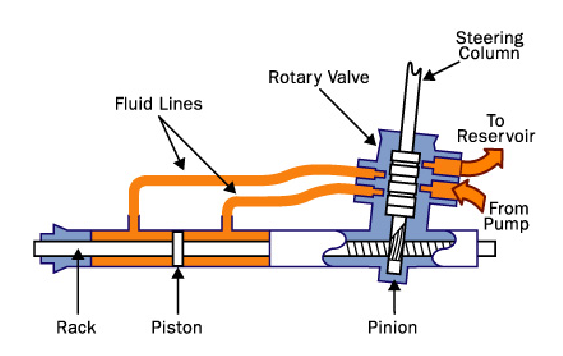Flushing the Rack & Pinion Steering System Procedures
The rack and pinion has a different design in the power-steering system.


Protect your investment by performing proper FLUSHING procedure with all installation. [Refer to other flushing procedure].
- Once a rack & pinion has been removed from a vehicle, the power steering pump and lines must be flushed to remove all the old fluid. Skipping this important step can cause the rack to fail and void your warranty and will shorten the life of the replacement rack & pinion by circulating all the contaminants from the dirty fluid right back into the new rack.
- A clean system is a must.
- Flushing [follow owner’s manual and instructions] can be accomplished by raising the front wheels off the ground and pouring fresh fluid through the pump reservoir allowing the fluid to drain out the return line. When the rack is back in the chassis, reconnect only the return line to the rack. Place the pressure line from the pump in a drain pan. Fill the pump reservoir with the [specified by the vehicle manufacturer] correct type of power steering fluid, then crank the engine over or turn the pump by hand. Add two quarts of new PS fluid to the pump reservoir, and then reconnect the pressure line to the pump.
- When installing the pressure lines on the rack, extreme care must be taken not to overtighten the fittings. Some lines are designed to swivel after they have been tightened to provide flexibility during installation and to accommodate engine vibration. Overtightening the line fittings can strip the soft aluminum threads in the rack and damage housing.
- After filling the system, you will have to bleed the system to remove trapped air. One recommended method is done my raising the front wheels off the ground, then slowly turning the steering from side to side at least five times with the engine off until no more bubbles can be seen in the fluid reservoir, and the reservoir level remains steady.
- Then, disable the ignition and crank the engine over several times while observing the fluid in the pump reservoir. Make sure the fluid reservoir is full when you have finished.
